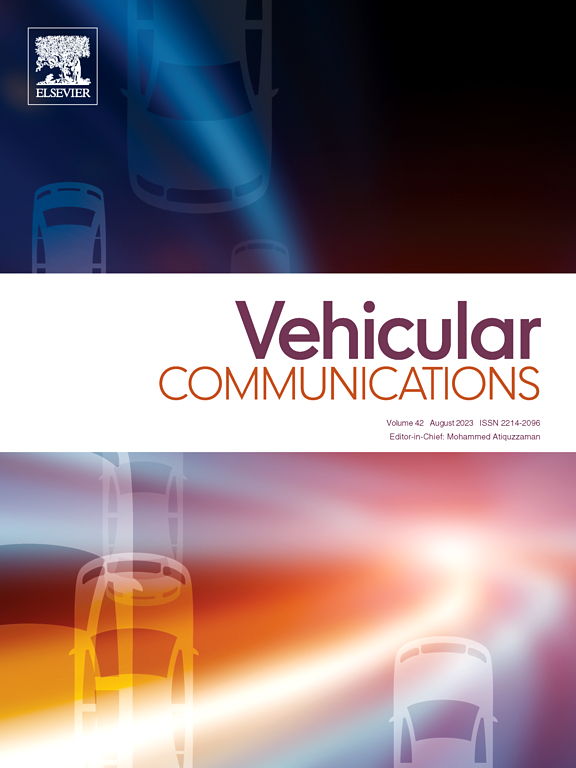P3AKA:一个基于PUF的车辆与电网安全通信的隐私保护认证和密钥协议框架
IF 6.5
2区 计算机科学
Q1 TELECOMMUNICATIONS
引用次数: 0
摘要
传统电网集成了智能电网(SG)技术,以减少温室气体排放,提高能源转换效率。车辆到电网(V2G)被提出并与SG网络相结合,以实现SG技术的这些目标。V2G技术中的双向功率流允许电动汽车(EV)为电池充电,并通过充电站(CSs)将多余的能量释放回电网。在能量传输过程中,电动汽车通过不安全的通道与CS共享身份、位置和充电偏好。它为V2G网络带来了重大的安全和隐私漏洞。此外,EV和CS位于暴露的位置,可能会增加物理攻击的风险。因此,有必要在V2G网络中保护EV和CS的安全和隐私。此外,对于V2G网络中资源受限的CS和EV,需要轻量级的安全解决方案。为了克服V2G网络中的安全挑战,文献中提出了几种身份验证和密钥协商协议。但是,现有的方法不能保证会话密钥的保密性和防止物理攻击。因此,我们提出了一个基于物理不可克隆函数(PUF)的V2G网络隐私保护认证和密钥协议(P3AKA)框架,使用轻量级加密操作。PUF保护CS和EV免受物理攻击,其他轻量级加密功能保护网络免受其他安全攻击。对提议的P3AKA框架的安全分析表明,它可以保护V2G网络免受潜在的安全威胁,如冒充、重播、中间人(MiTM)、物理攻击和机器学习攻击。此外,它还保证了用户的匿名性和EV用户的不可追溯性。正式的安全性验证使用ROR模型和Scyther工具来验证提议的P3AKA框架。说明P3AKA框架在V2G网络中成功地提供了双向认证和会话密钥保密。此外,性能分析表明,与现有的相关方案相比,所提出的P3AKA框架在具有竞争性开销的情况下提高了安全性。本文章由计算机程序翻译,如有差异,请以英文原文为准。
P3AKA: A PUF based privacy preserving authentication and key agreement framework for secure communication in vehicle to grid network
A traditional power grid integrates a Smart Grid (SG) technology to reduce greenhouse gases and increase the efficiency of energy transition. The Vehicle to Grid (V2G) is raised and combined with the SG network to fulfill these objectives of the SG technology. The two-way power flow in the V2G technology allows an Electrical Vehicle (EV) to charge its battery and discharge surplus energy back to the power grid through the Charging Stations (CSs). During the energy transfer, an EV shares identity, location, and charging preferences with the CS through an insecure channel. It raises significant security and privacy vulnerabilities for the V2G network. In addition, the EV and CS are situated in an exposed location that may increase the risk of physical attack. Hence, there is a need to preserve the security and privacy of the EV and CS in the V2G network. Moreover, a lightweight security solution is necessary for the resource constrained CS and EV in the V2G network. Several authentication and key agreement protocols were suggested in the literature to overcome the security challenges in the V2G network. However, the existing approaches fail to maintain the session key secrecy and preserve from the physical attack. Thus, we propose a Physically Unclonable Function (PUF) based Privacy Preserving Authentication and Key Agreement (P3AKA) framework for the V2G network using lightweight cryptographic operations. PUF protects the CS and EV from the physical attack and other lightweight cryptographic functions safeguard the network from other security attacks. Security analysis of the proposed P3AKA framework represents that it protects the V2G network from potential security threats such as impersonation, replay, Man-in-The-Middle (MiTM), physical, and machine learning attacks. Further, it ensures user anonymity and non-traceability of the EV user. The formal security verification uses the ROR model and Scyther tool to verify the proposed P3AKA framework. It illustrates that the P3AKA framework successfully provides bidirectional authentication and session key secrecy in the V2G network. In addition, the performance analysis illustrates that the proposed P3AKA framework improves security with competitive overheads compared to existing relevant schemes.
求助全文
通过发布文献求助,成功后即可免费获取论文全文。
去求助
来源期刊

Vehicular Communications
Engineering-Electrical and Electronic Engineering
CiteScore
12.70
自引率
10.40%
发文量
88
审稿时长
62 days
期刊介绍:
Vehicular communications is a growing area of communications between vehicles and including roadside communication infrastructure. Advances in wireless communications are making possible sharing of information through real time communications between vehicles and infrastructure. This has led to applications to increase safety of vehicles and communication between passengers and the Internet. Standardization efforts on vehicular communication are also underway to make vehicular transportation safer, greener and easier.
The aim of the journal is to publish high quality peer–reviewed papers in the area of vehicular communications. The scope encompasses all types of communications involving vehicles, including vehicle–to–vehicle and vehicle–to–infrastructure. The scope includes (but not limited to) the following topics related to vehicular communications:
Vehicle to vehicle and vehicle to infrastructure communications
Channel modelling, modulating and coding
Congestion Control and scalability issues
Protocol design, testing and verification
Routing in vehicular networks
Security issues and countermeasures
Deployment and field testing
Reducing energy consumption and enhancing safety of vehicles
Wireless in–car networks
Data collection and dissemination methods
Mobility and handover issues
Safety and driver assistance applications
UAV
Underwater communications
Autonomous cooperative driving
Social networks
Internet of vehicles
Standardization of protocols.
 求助内容:
求助内容: 应助结果提醒方式:
应助结果提醒方式:


